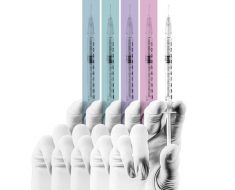Anthony Bourdain — chef, author and television host — was found dead on Friday at age 61. He died of an apparent suicide.
His death comes just three days after designer Kate Spade died by suicide. The tragedies have lead to an increased awareness of the significant rise in suicide rates in the United States. According to a new report from the Centers for Disease Control released Thursday, suicide rates in this country are soaring.
Since 1999, deaths by suicide have increased by around 30 percent, with nearly 45,000 people committing suicide in 2016 alone. And Bourdain’s age group — those between ages 55 to 64 — have the third highest rates of suicide, at 18.71 per every 100,000 Americans. The increase occurred across all racial and ethnic groups.
While precise causes necessarily vary with each case, there are a number of factors that contribute to the disturbing rise in suicide deaths, Dr. Kevin Gilliland, Psy.D., tells PEOPLE.
“It’s a hard thing to study,” Gilliland says, but he believes that social media likely plays a part.
“The internet and social media have increased the opportunity to bully, and feed into our own perceptions of our happiness and joy,” he says. “If you want to feel bad about yourself, just spend some time on social media. One of our challenges is using social media and the internet in a thoughtful way, which we are not doing yet. We have to become more responsible.”
Other factors he notes are the rise in opioid use and addiction, as well as a large increase in mood disorders and anxiety.
“Our number one mental disorder that we humans struggle with is anxiety, and anxiety and depression are the leading mental health illnesses that factor into suicide,” Gilliland says.
Along with lack of mental health care, other factors that contribute to suicide are social isolation, gun ownership and drug abuse.
The CDC report shows that the largest rises in suicide are in states where, the New York Times notes, poverty and drug use are high, such as Oklahoma, Montana and Wyoming.
Among the people who died by suicide, many had recently undergone difficult life experiences, such as relationship problems, financial stress or job loss. Cases of substance abuse were also common, with 28 percent having trouble with drinking or using drugs in excess, according to the CDC report.
Gilliland says it’s now up to researchers to further identify the causes and help find ways to better cope with the ongoing problem.
“We’ve got to do a better job of looking at the usual suspects: increasing anxiety disorders, mood disorders, substance abuse, social isolation, relationships. And if we start with those, they’re going to be the things that most likely account for the rising rates.”
And, he adds, the best way to help someone at risk of suicide is to reach out.
“Talking saves lives. Ask if they have had the thought and let them know that it’s not unusual for people that ‘feel like they do or are going through what they are’ to have those thoughts,” Gilliland said. “Most people mention something to friends, physicians, or their religious circle. They may talk about it in passing, give things to other people, or talk about feeling hopeless about their current situation. Family members or life-long friends often know that the person had been struggling.”
Gilliland added that it is a myth that talking to someone about suicide puts the idea into their head. It’s actually best to bring it up.
“Ask them if they have had the thought or feeling like it would be better to ‘just not be alive,’ ” he says. “Express empathy for the person and offer to help them get connected to people that can help them with how they are feeling. Help them develop a plan to get help and follow-through with them until they get connected. People often don’t know they are depressed or what’s wrong with them and may need your help getting connected to the appropriate healthcare people that can treat their condition.”
If you or someone you know is considering suicide, please contact the National Suicide Prevention Lifeline at 1-800-273-TALK (8255), text “help” to the Crisis Text Line at 741-741 or go to suicidepreventionlifeline.org.
Source: Read Full Article





